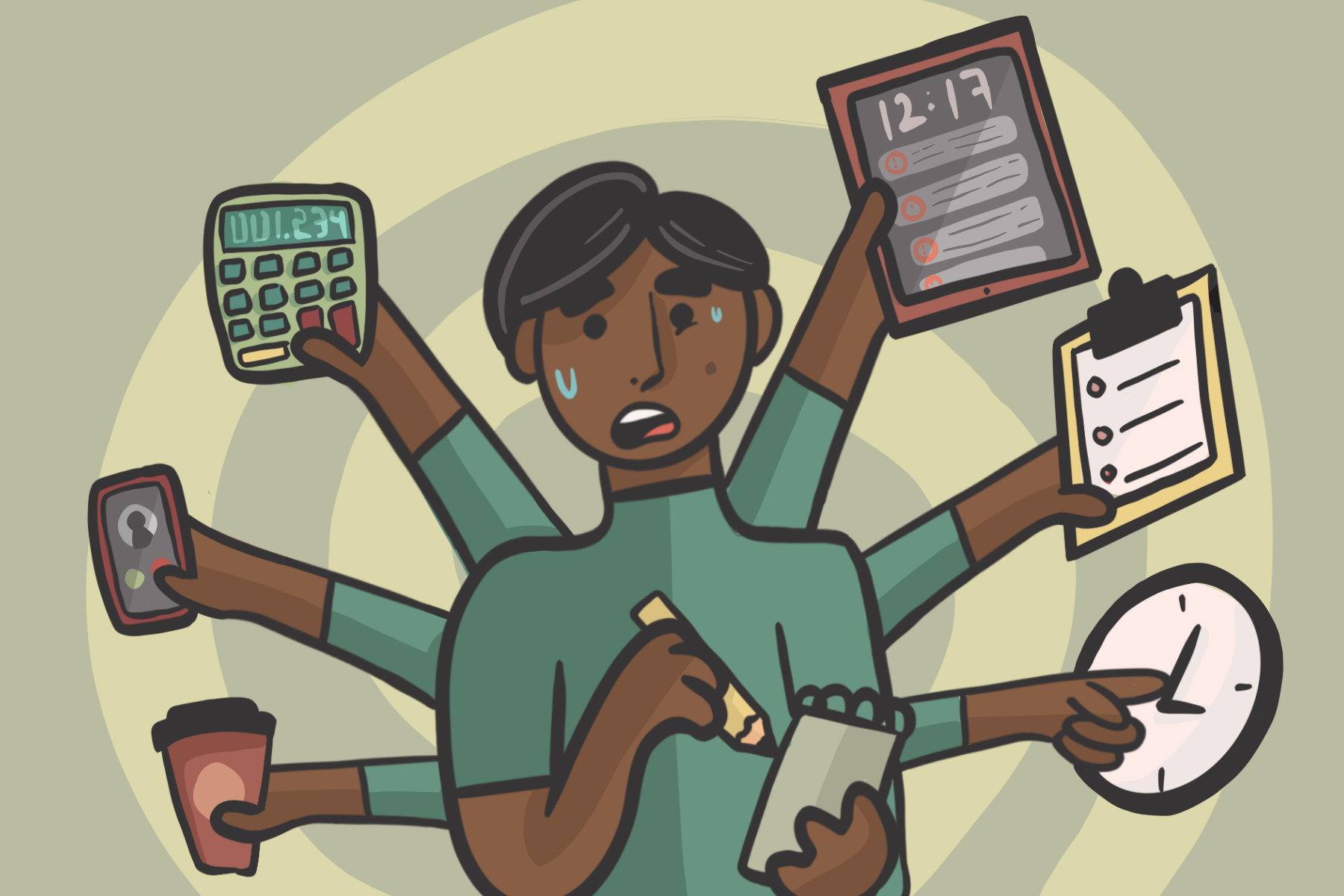Hustle culture and technological devices prevail in our daily lives; we must do everything quickly and simultaneously, and technology has allowed us to do all this in one device. During this digital age, technology has facilitated and boosted people’s multitasking skills, but can we efficiently perform more than two tasks at the same time?
The term multitasking first appeared in 1965 in an IBM report describing the capabilities of the IBM System/360, which referenced the multiple processes a computer could execute in a given period. From there, the concept was coined to refer to human multitasking, the apparent ability to perform two or more independent activities with different goals at once.
It’s not impossible to multitask (only 2.5 % of people can do it); however, there is a problem when we think that we are good at it and can do any activity on par with others. Thus, we believe we are more efficient doing it and applaud this “skill,” when instead, multitasking destroys our productivity and has negative consequences for our brains.
Although we can find ourselves doing different things at once without realizing it, multitasking has various levels. Singing the lyrics to your favorite song while doing household chores is different than using your cell phone while driving down a busy street. Some activities require our total and complete attention; although we think we can do them simultaneously, we do not do them with the same quality as we would individually.
When we execute two or more activities requiring a high concentration level, we shift our attention quickly between tasks; this “switch tasking” costs time and causes a loss of up to 15% of cognitive efficiency. Consequently, our mind experiences continuous interruptions, and we lose concentration, paying only partial attention to what we do.
Our brain cannot focus intensely on more than one thing simultaneously; therefore, doing several tasks at once affects our cognitive processes and mental health. Switching quickly between tasks overstimulates our brains and causes stress and anxiety, making people feel scattered and desperate due to not completing their activities.
When we multitask, we can feel a sense of productivity. For example, “I was able to troubleshoot a problem over the phone while completing a form and making progress on my PowerPoint presentation.” And yes, it sounds productive, but if we examine each activity closely, likely, their quality could be much better. It may have been possible to talk on the phone, but specific details may have been forgotten; the completed form was only glanced over, and the PowerPoint presentation may have spelling errors or incomplete statements. The brain is so fragmented in each task that it does not achieve the quality it would if the tasks were performed separately.
Studies show that people’s productivity when multitasking reduces their productivity by up to 40 % because we are more prone to making mistakes due to a lack of attention to detail, and our retention ability suffers. “People who multitask are not able to filter out irrelevance […] They are chronically distracted,” says psychologist Clifford Nass.
Studies have found that many people consider themselves multitaskers, proving their metacognition is also affected. People think they can manage several things at once and are also good at it, which is very dangerous in some cases.
A small experiment
An interesting exercise that proves the ineffectiveness of multitasking was proposed by Scott Blades, which consists of taking a pencil and paper and setting a timer where you take the time to write your first name and surname (Mariana Jiménez), and under this, write a sequential number for each letter (1,2,3,4,5,6,7, 8,9,10,11,12,13,14). In my case, it took about 15 seconds.
Now, try doing the same as above, but write a letter, go down a line, write the number, go back to the line for letters, and so on until you finish your name. You will see that it will take longer to write one statement. In my case, it took 27 seconds. If this simple exercise shows that we are less efficient at doing two things simultaneously, imagine the results if we perform more complex tasks!
Dethroning multitasking: monotasking
“If we want to finish all our tasks and do everything, we must understand when it makes sense to multitask and when it is better to give one task our full attention.” (Cooks-Campbell, 2023). If you can’t concentrate on moving a pending task forward, endangering others or yourself, or you can’t finish your to-do list, it is better to do one thing at a time. Fast does not necessarily mean efficient.
The ability to multitask is highly celebrated, and sometimes even a job requirement, but the reality is not as good as it seems; it consumes our energy much faster than focusing on one thing. Monotasking, as its name indicates, means completing one activity at a time. It sounds simple, but the ongoing saturation of information, notifications, and the quick pace of life we experience these days can challenge many people.
So, what can be done to facilitate paying attention to a single task? Here are some tips:
- Prioritize: At the beginning of the day, we often lose our minds, and our thoughts are scattered. Liberate yourself from the free flow and write your thoughts down, so you can list them and enumerate the ones with high priority.
- Organize: Make a specific schedule for each activity or designate a space to do them. For example, if you spend much time checking personal messages via social media, establish a few minutes to review them all at once instead of being distracted whenever you receive a new notification.
- Time: A good technique to implement is the 20 minutes rule, where you focus on a single task. You can take a break or move on to the next task when the time is up. Over time you can increase the minutes and even go to an hour.
- Limit: Distractions are everywhere, and our phones have the most potential to interrupt us. Put it on “silent” during specific tasks or use headphones with classical instrumental music or white noise to avoid interruptions to your concentration.
In the beginning, the term multitasking referred to work done by computers. We must be sensible about knowing when we can perform more than one skill at a time and when we cannot. This distinction will lead us to manage time in the best way, make fewer mistakes, and maintain our mental health. Let’s remember that doing a lot simultaneously does not equal productivity!
Translation by Daniel Wetta
This article from Observatory of the Institute for the Future of Education may be shared under the terms of the license CC BY-NC-SA 4.0 
)
)


)